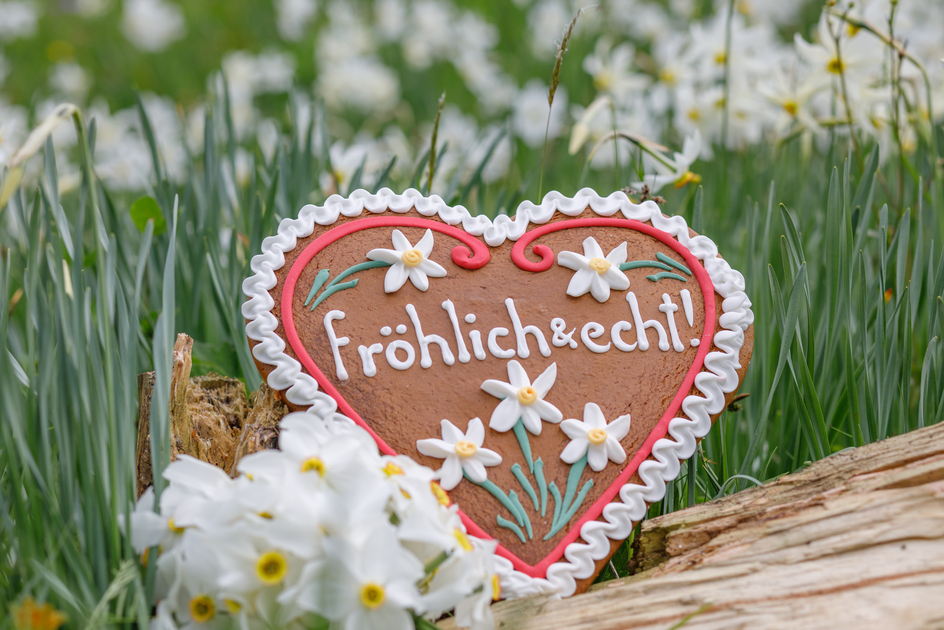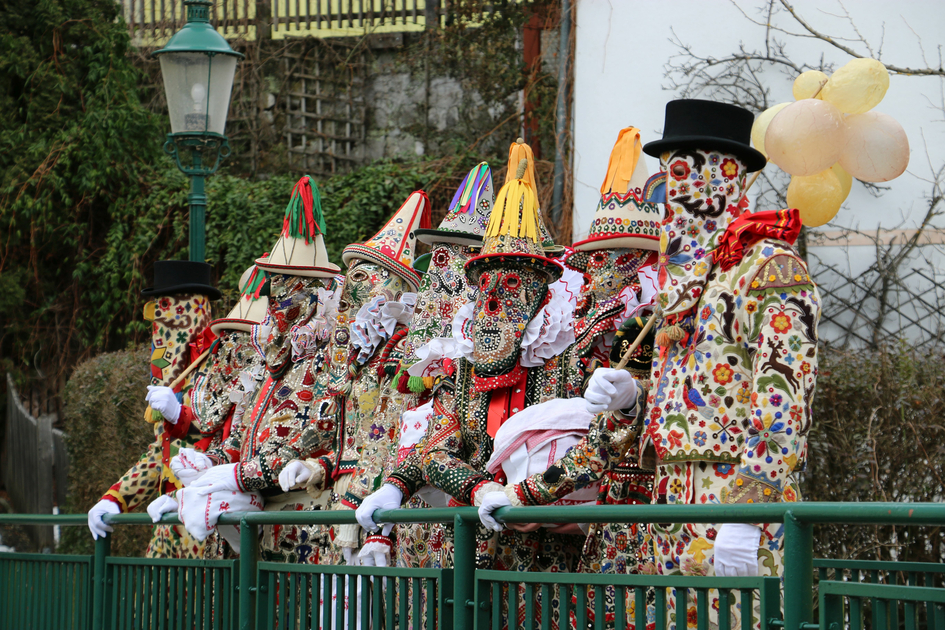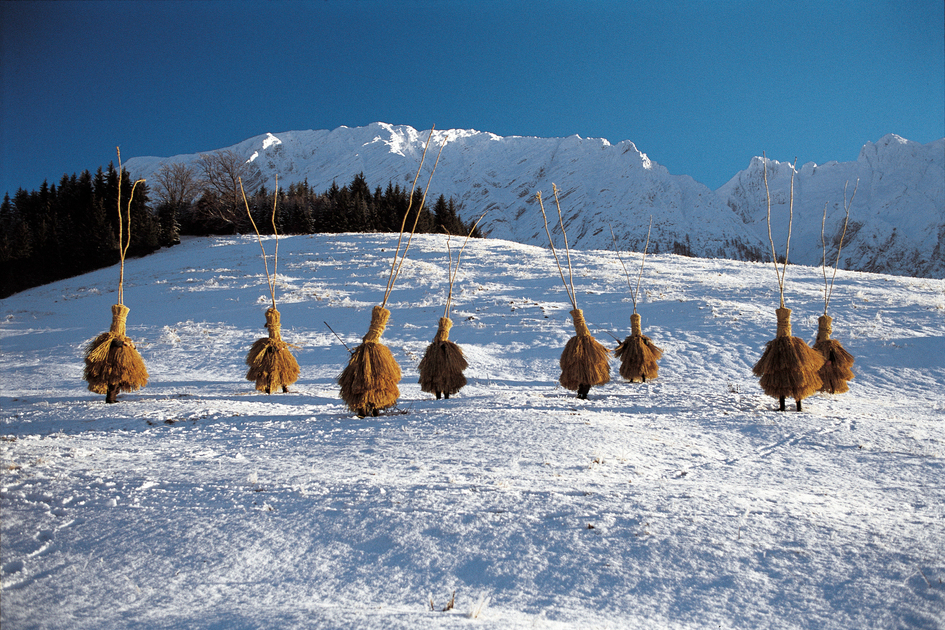

Traditional costume and Traditions in Ausseerland
Handicraft and traditional costumes belong to the Ausseerland like the air to breathe. The special knowledge and skills are valued and passed on. With pride one wears the individually made pieces, uses and acquires honest handicraft products for one's own use: dirndls, leather pants and hats, but also hunting and traditional costume jewelry are among the masterpieces from the Ausseerland-Salzkammergut.
Traditionally dressed on the road in Ausseerland
Pink skirt, green bodice with pink apron - it can only be the famous Ausseer Dirndl. While the women wear their dress on special occasions, the men reach for the tailored leather trousers and combine them with green socks and a "Spenzer".
Obligatory is also the Ausseer hat, which is decorated with a specially forged hatpin. The outfit is traditionally rounded off with a watch chain with pendant and a knife in the stiletto bag of the lederhosen.
From head to toe - handmade in Ausseerland
Handicraft businesses that maintain the old skills in manufacturing are in great density in the Ausseerland-Salzkammergut. In the Dirndl tailor shops there are almost endless possibilities for combining fabrics and patterns, which are also gladly explained during guided tours.
Equally exciting is the knowledge about hat production. The Aussee hat is an integral part of the outfit, if only for practical reasons such as protection from the sun. In the regional goldsmith's workshops, hunting and traditional costume jewelry creations are made to match.
Incidentally, among the most famous wearers of the Aussee costume was Archduke Johann of Austria. He remained loyal to it throughout his life. Just as the people of Aussee do to this day.
The Narzissenfest
At Austria's largest flower festival, tradition is combined with nature and hospitality. Whenever daffodils transform the meadows in the Ausseerland-Salzkammergut region into a fragrant sea of blossoms, the Daffodil Festival takes place. The highlight and conclusion of the festivities in May are the town parade in Bad Aussee and the boat parade on Lake Altaussee. Many fragrant, imaginative and hand-planted daffodil figures can be marveled at.
Colorful carnival in Ausseerland
From Shrove Sunday to Shrove Tuesday, there are exuberant celebrations in Ausseerland. What happens on these days? Music and singing groups perform so-called carnival letters in various inns. They sing and rhyme about misfortunes, local politics and local conditions from old timesand take so the concerning on the grain. The anecdotes are supported by hand-drawn pictures.
Three traditional figures play an important role in the carnival events in Ausseerland:
- The Trommelweiber (drum women) represent the gender swap that is common in carnival and accompany the carnival parade on Sunday.
- The splendid costumes of the Flinserl, the spring figures in the carnival, are based on the Commedia dell' arte.
- The Pless symbolize the winter. They wear old, padded dresses and are also easily recognizable by the distinctive beehives on their heads. They are chased away by boys with snowballs.
Saint Nicholas, Krampus und Habergeiß
December 5 is Krampus Day - or "Miglotog" as it is called in Ausseerland. The term Miglo comes from the Alpine region and is another word for Krampus - the frightening figure of Advent traditions and the companion of St. Nicholas. On this day, in Altaussee, Bad Aussee and Grundlsee, the Krampus-Groups parade from house to house. In Bad Mitterndorf, Tauplitz and Pichl-Kainisch traditional "Nikolospiele" are performed.
Folk music plays in Ausseerland
And what would all the festivals and celebrations be without the right music? The impressive mountain scenery and the magnificent lakes of the Ausseerland have inspired the Ausseer musicians for generations. The Ausseer folk music belongs to the alpine folk culture and until today the yodel, the Landler and the Steirer have been preserved in their original form.
Today it is groups like the "Gimpelinsel Saitenmusi" that carry a piece of culture into the next generation with partly ancient folk songs.












